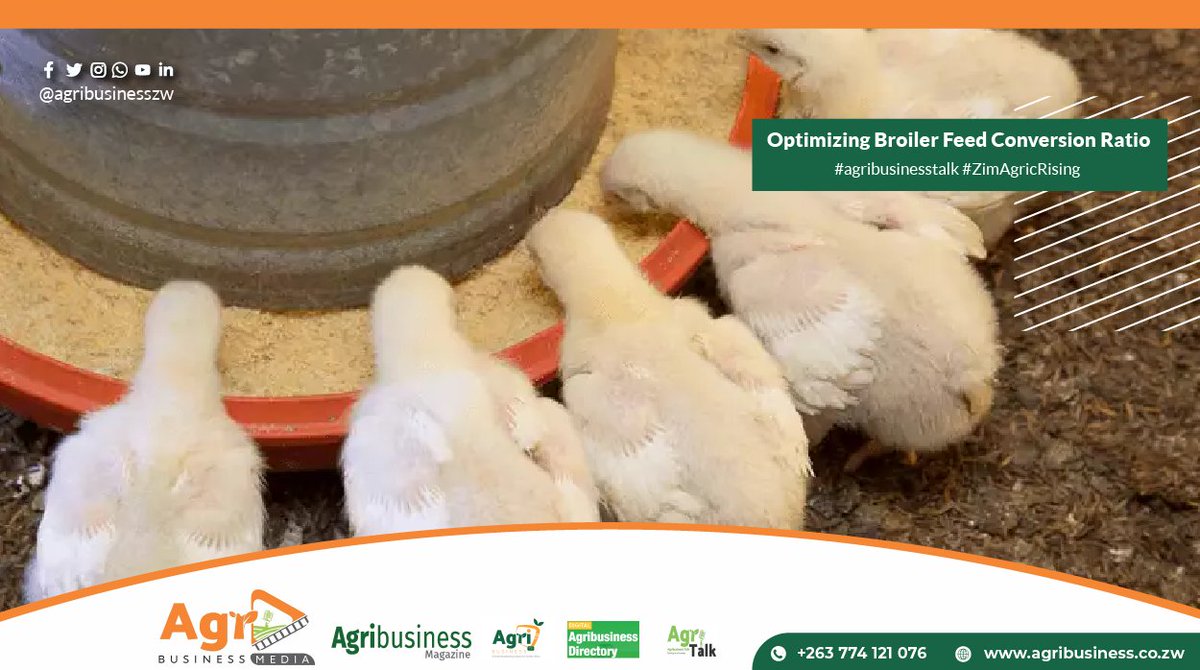
Key principles in the Cattle Fattening Business
L Sakutukwa +263774325213
follow @agribusinesszw
1. You buy (or produce) cattle at the cheapest possible cost per kg for fattening purposes. #agribusinesstalk (1/10)
L Sakutukwa +263774325213
follow @agribusinesszw
1. You buy (or produce) cattle at the cheapest possible cost per kg for fattening purposes. #agribusinesstalk (1/10)

2. You buy (or produce) cattle that have the highest or best potential to put on weight (i.e. ability to convert feed to weight gain - known as the feed conversion ratio - FCR). Age, health, body condition Score, muscling score, #agribusinesstalk (2/10) 

frame size and condition of teeth are important factors to consider when selecting cattle for Feedlot
#agribusinesstalk (3/10)
#agribusinesstalk (3/10)

3. You build a structure (Feedlot pen) where you will feed these cattle entirely on a nutritionally balanced total mixed ration (TMR) plus water 45-90L per head and other production activities such as vaccination, dipping and de-worming. #agribusinesstalk (4/10) 

4. The TMR used must be BOTH nutritionally balanced and also be the cheapest possible in terms of cost/kg. It is the biggest cost factor that determines the bottom line - your profit #agribusinesstalk (5/10) 

5. You feed the animal 3% of its live weight for 60-90 days, monitoring its health, feed consumption and weight gain
6. You ensure that you time your start and finish so that you hit the best market prices for your fattened animals. #agribusinesstalk (6/10)
6. You ensure that you time your start and finish so that you hit the best market prices for your fattened animals. #agribusinesstalk (6/10)

7. You safely transport your cattle to market (usually an abattoir) where the animal is slaughtered and graded according to its meat quality (Super, Choice, Commercial, Economy, Manufacturing and Condemned). You get paid for the Cold Dressed Mass, #agribusinesstalk (7/10) 

which is roughly 45-55% of live mass.
8. Your profit depends primarily on:
a) the cost per kg of purchasing (or producing) the live animal,
b) the cost per kg and amount of feed given to the animal
#agribusinesstalk (8/10)
8. Your profit depends primarily on:
a) the cost per kg of purchasing (or producing) the live animal,
b) the cost per kg and amount of feed given to the animal
#agribusinesstalk (8/10)

c) other production costs, such as the Feedlot pen, water supply, transport, clearance, labour, vaccines, dewormers, dip chemicals and storage
d) the amount of weight gained during the feeding period and the shrink loss due to transport etc
#agribusinesstalk (9/10)
d) the amount of weight gained during the feeding period and the shrink loss due to transport etc
#agribusinesstalk (9/10)

e) the carcass grade attained
f) the selling price per kg of the carcass
Hope this will get you started. #agribusinesstalk (10/10)
f) the selling price per kg of the carcass
Hope this will get you started. #agribusinesstalk (10/10)

• • •
Missing some Tweet in this thread? You can try to
force a refresh




















